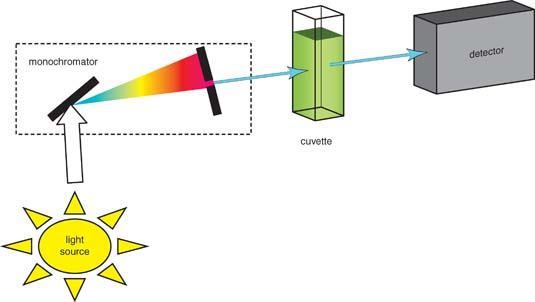Butane will also absorb up to about 32ml/liter water.
Thanks for the Beer's tip! It most certainly covers the color change with density, but how about colors? Here is a picture of a butane extraction from fan leaf that I couldn't see through, but which the camera saw as reflecting blue light.
Did it have this same effect on multiple pictures? Else I'm almost certain that is a malfunction in your camera.
As for colors in general vs. a law like Beer's--color is (as I'm sure you can imagine) a very freaking complicated area as it regards chemistry. What you're really getting into when you want to know about color is molecular orbitals. You're entering the quantum world when you start asking difficult questions here.
This is not stuff that I'm realistically going to be able to explain on the internet. It's not even a singular concept that I can point to.
What I can do is give you a few examples which might convince you that this is some really really complicated stuff. The nature of color is such that it can be affected by what something is in or near. A hydrated salt can appear to be a different color than the dehydrated salt--other things like this.
What you're really looking at when you see a color is the result of the electronic properties of a molecule. You're essentially knocking an electron out of it's orbital with a photon--exciting the molecule. For any atom in a molecule, the electrons in it's orbital can only exist in discrete energy levels. For this reason only certain wavelengths of light are active to a given compound (wavelengths which precisely match the energy needed to excite the electron). The compound will absorb these wavelengths and allow others to pass. Fluorescence tends to come from UV excitation and involves the re-emission of a photon from the excited-state to re-enter a ground state. As I'm sure you know this can also lead to different colors.
Bohr spent half of his career simply working out the energies and spectrum for hydrogen atoms in various situations, and in so doing gave us the model for the atom which we have today (or at least a vast majority of the puzzle). A link to that here:
http://hyperphysics.phy-astr.gsu.edu/hbase/hyde.html
This is how something can absorb one wavelength and "reflect" another.
I mentioned conjugation earlier and I'll quickly address that:
When a molecule has this property of conjugation--it is sharing electrons
equally across several main chain atoms (more than two--two is common as a covalent bond) [Edit: worth noting that we're talking carbon chemistry here]. So the energy levels are wildly different than what we normally see across covalent bonds (where the orbitals are mixed in a precise way which we've described and understand well). As you get into molecules with multiple conjugations--and molecules which can conjugate ACROSS molecules (something which non-polar molecules are particularly well equipped to do--due to their tight packing, low polarity, and entropic exclusion of water)--things can start to spin your head. A common example of conjugation is benzene--the ring is fully conjugated, this is demonstrated by noticing that each bond in benzene is somewhere between the length of a single bond and a double bond. Conjugated segments are also planar as a prerequisite, if that interests you. The model of benzene which shows the double bonds is known as a
resonance form. It is a fake made up model of the atom. The ring with a circle showing equal bonds throughout is the literal representation--and you'll also notice that it's the synthesis of the two equilibrating resonance forms (one with the double bonds on 3 faces, the other with the single/double bonds flipped)
Orbitals themselves are hard enough concepts to get nailed down to be completely honest about it.
There are other things to consider like refraction, semi-stable excited states for electrons, how the nucleus of an atom plays into all this, and much more. The best answer I can really give you here is that sans proper equipment--you're not going to get an answer here which satisfies you.
Here's a few wiki pages you might find interesting which can lend some reality to how complex this stuff gets--I really recommend at least checking out the first link:
http://en.wikibooks.org/wiki/A-level_Applied_Science/Colour_Chemistry/Colour
http://en.wikipedia.org/wiki/Crystal_field_theory
http://en.wikipedia.org/wiki/Color_of_chemicals
http://en.wikipedia.org/wiki/Excited_state
http://en.wikipedia.org/wiki/Rydberg_formula





